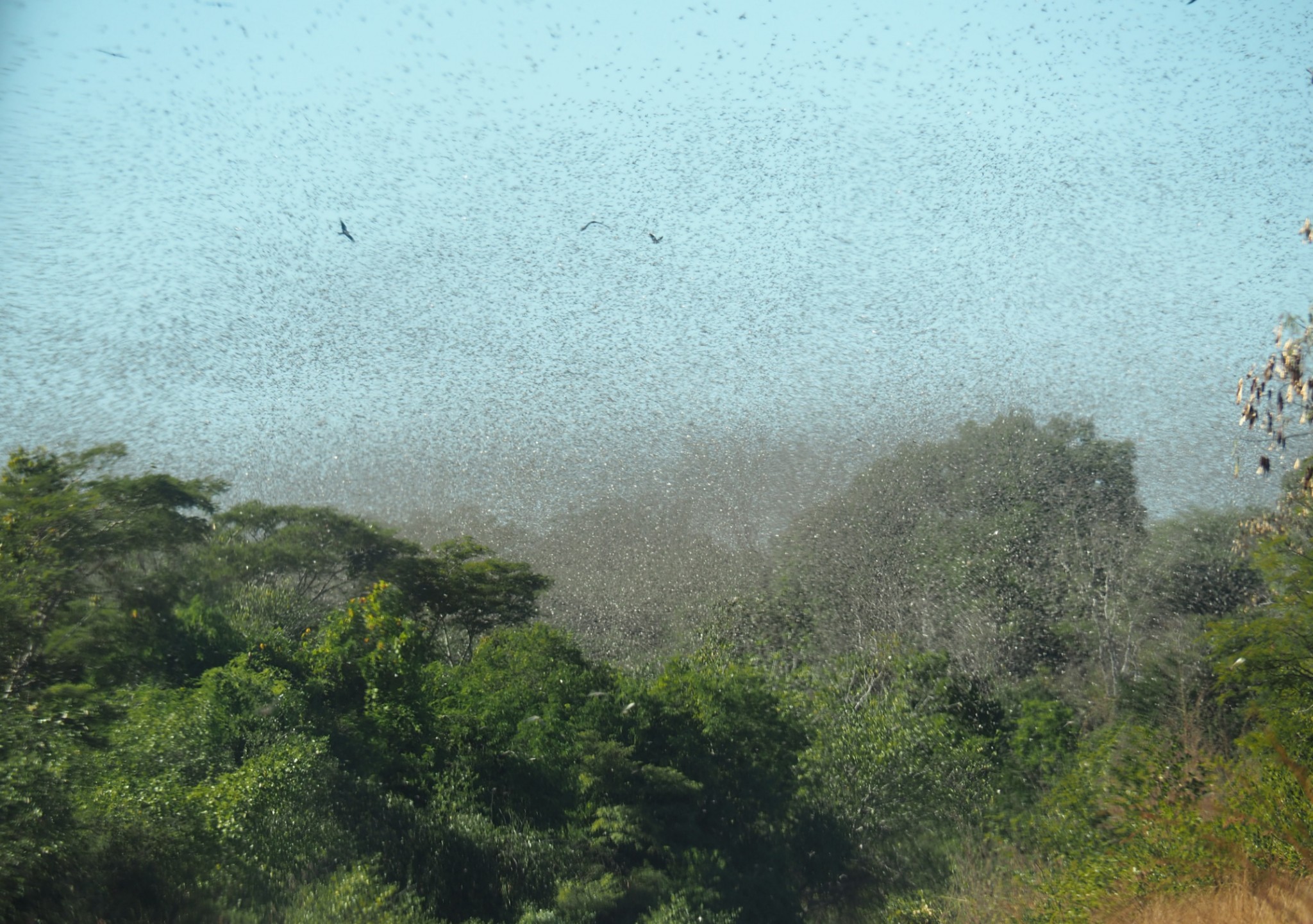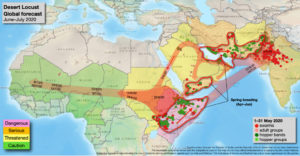 CC Image courtesy of Laika ac on Flickr. License here: https://bit.ly/2XrXffV.
CC Image courtesy of Laika ac on Flickr. License here: https://bit.ly/2XrXffV.
East Africa’s Looming Climate Catastrophe
On May 21, the World Bank approved $500 million to help combat the billions-strong swarms of desert locusts overrunning the greater Horn of Africa region. Since October 2019, these pests have invaded 23 countries across East Africa, the Middle East, and South Asia. With the ongoing COVID-19 pandemic preoccupying world governments, however, the World Bank fund is the first sign of sustained international attention to this problem.
America and the world need to continue taking the swarms seriously. In East Africa, the locusts threaten food security in a region already struggling to cope with the impacts of climate change on agricultural production. The situation is most alarming in Kenya, Ethiopia, and Somalia, but containment is impossible. Like COVID-19, locusts do not respect national borders—swarms have recently invaded India, and there is a real danger they will move into West Africa later this summer (see below, click to zoom).

June-July 2020 Locust Forecast, U.S. Food and Agriculture Organization Desert Locust Information Service (FAO/DLIS)
Climate Connections
The locust upsurge is the latest climate-related disaster to hit East Africa. Three consecutive years of droughts and floods have left up to 25 million people in the region struggling to feed themselves and their families. Capable of consuming as many crops each day as 35,000 people, the locust swarms will exacerbate existing food insecurity and leave many more at risk.
Locusts are not a new phenomenon in East Africa, but the scale of the current upsurge is unprecedented—the largest in 70 years. It is difficult to predict when locust outbreaks will occur, but it is clear the current swarms are related to climate change. In 2018 and 2019, unusually warm waters in the Indian Ocean led to a series of cyclones; these transformed a normally arid desert in the Arabian Peninsula into a lush locust breeding ground. The swarms then migrated to East Africa, where conditions have remained ideal for new cycles of locust reproduction. For example, recent floods have provided ample water for the pests to breed—while simultaneously undercutting response capacity.
COVID Complications
African countries have thus far proven successful in preventing the worst of COVID-19, but the pandemic is still affecting locust control operations. Aerial pesticide application is one of the most effective methods for killing the locusts en masse. COVID-related trade restrictions and supply disruptions, however, mean tens of thousands of liters of pesticide have been delayed in reaching East Africa.
Although Africa’s infection curve currently lags behind those of North America and Europe, COVID-19 cases are likely to catch up. Low rates of testing may actually be hiding the virus’s full impact on the continent. If East Africa’s coronavirus peak converges with the next cycle of locust swarms predicted for mid-June—peak harvest season for many localities—the region will need much more than $500 million.
The Security Dimension
The locust upsurge also demonstrates the linkages between climate and conflict. The compounding effects of economic crisis, climate change, and armed conflict in Kenya, Ethiopia, Somalia, and Yemen have left these countries especially vulnerable to the destructive power of the locust swarms. Violent conflicts have deteriorated resiliency and reduced response capacity in these states. It is difficult to coordinate pesticide campaigns in places like Yemen and Somalia, for example—in the former, the Yemeni government and Houthi rebels haphazardly divide locust eradication responsibilities; in the latter, locust control teams have had to negotiate with Al-Shabaab militants for access to breeding grounds.
Along with these logistical hurdles, climate-related disasters tend to lay the groundwork for future conflicts. They do so by exacerbating traditional causes of conflict: resource scarcity, weak socio-political networks, and ethnic disputes. Kenyan pastoralists are already bracing for conflict in the wake of the locust swarms, as people begin moving herds to find grassy areas that are increasingly few and far between.
What Happens Next?
The locusts are not going away anytime soon—if current climate conditions in East Africa persist, the region could experience yet another wave come September. The resulting confluence of locust swarms, COVID-19, armed conflict, and climate extremes would deal a devastating blow to regional food security.
American interests in East African security and stability mandate greater U.S. action. Through USAID, the U.S. government has already allocated a total of $19 million for locust mitigation efforts—and to assist farmers and pastoralists who have lost their livelihoods. This latter point is important, for any meaningful assistance needs to promote resiliency measures and long-term food security in a region likely to face more locust swarms in a warming world.





